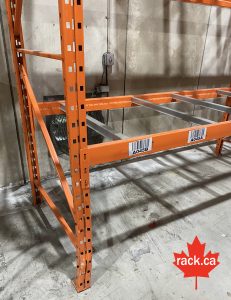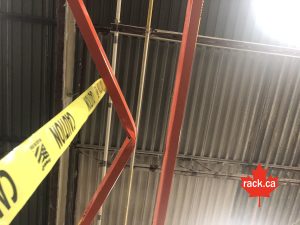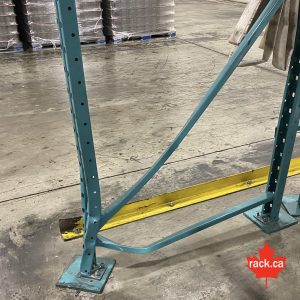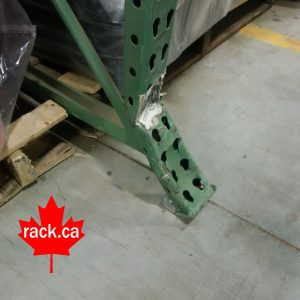If you’re in the market for used pallet racking systems, it’s important to know how to inspect them properly. Many businesses make the mistake of not inspecting racks properly and end up with faulty equipment that can cause serious safety concerns. When inspecting used pallet racking systems, there are a few things that you need to keep in mind.
In this blog post, we will walk you through the inspection process so that you can make sure you’re getting quality equipment.
Inspect the Pallet Rack for Damage
Because of their positioning, pallet racks are especially vulnerable to damage from forklifts. Accumulative wear and tear from even light impacts can eventually harm the structural integrity of the storage racks. Examine both the front and rear beams for any evidence of damage, such as dents, scratches, or skewing. Even if the damage seems superficial, it might have weakened the structure.
Next, check the braces. Braces are used to strengthen a racking unit’s structural integrity. If they are damaged or severely bent, the whole unit’s stability and maximum loading capacity may be jeopardized. Look for cracks, cuts, and damage in the braces.
 Check Beam Deflection
Check Beam Deflection
In addition, you should calculate the beam deflection. Deflection is how much beams bow or sag under pressure from a load. It’s usually a sign that the rack is overburdened. If the beams are damaged, they may no longer support the pallets’ weight, causing the beams to deflect or tilt toward one another.
The American National Standards Institute (ANSI) advises that when pallets are loaded, the vertical beam deflection shouldn’t exceed 1/180th of the length of the beam.
Check Rack Uprights
The terms “plumb” and “straight” are used to describe the straightness and verticality of the rack uprights. For more even load distribution, make sure your uprights are plumb and straight. An “out-of-plumb” rack is one whose column has bent, while an “out-of-straight” rack excessively sags or bows.
To be considered robust, your uprights must have an out-of-plumb ratio of no more than 0.5″ per 10 feet. If the proportion is higher than that, your racks are leaning too far and have a chance of collapsing. The straightness of your uprights refers to their actual form. Check that the out-of-straight ratio for your uprights is less than 0.05″ per 12″ of height.
Check Beam Connectors
The beam connectors join the uprights to the beams. A variety of connector styles are available, both generic and proprietary. Used pallet racks are more likely to have less common connector types, which means that it will be harder to find spare parts and compatible accessories.
Regardless of the connection style, inspect the holes and mounting points for cracks, bends, and deformation at first. Ensure that all safety pins are in working condition if your connections use them. If your beams are attached to your uprights using a bolting system instead of hooks or clips, inspect the bolts for damage or missing pieces. Ensure all the bolts are tightened to the required torque. A rack with loose or missing bolts is not safe.
Check the Floor
Used racks may have been installed on an uneven floor, which can cause the racks to be unstable. Uneven floors can also damage the racks over time.
The first step is to check for any visible signs of damage, such as cracks or warping. If you can’t see any damage, use a level to check for unevenness. The maximum acceptable slope for a rack installation is 1/4 inch per foot. If the slope is greater than that, the racks may need to be shimmed or replaced.
Check the Feet
The feet of your racks are what keep them level and in place, so it’s essential to make sure that they’re in good condition.
Look for any damage, such as cracks, bends, or warping. If the feet are adjustable, ensure they’re adjusted to the correct height. The feet should be level with each other and the floor, so use a level to check their alignment. If the feet are not level, the racks may be unstable.
Buy Used Pallet Racking Systems in Toronto
If you find any damage while inspecting used pallet racks, it’s important to make repairs as soon as possible. Ignoring damage will only worsen the problem and put your employees at risk. By following the above tips, you can ensure that your racks are safe and stable.
Canadian Rack Technologies Inc. is one of the leading distributors of high-quality and fully customizable storage racks in Toronto, Ontario. We’ve worked with a number of warehouses across the province over the years to help maximize their operations and improve space efficiency. Contact us today to learn more about our products.
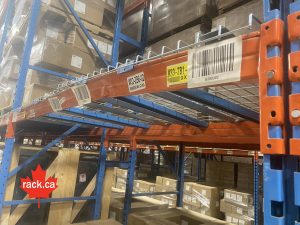 Check Beam Deflection
Check Beam Deflection